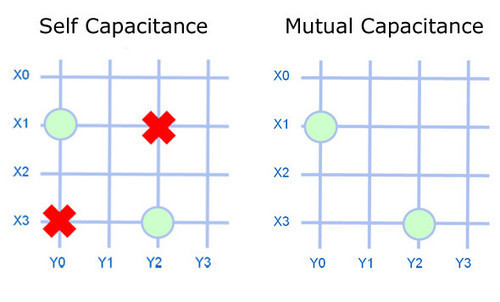
What is the working principle of hovering touch technology? Erik Hellman, a research engineer and co-inventor of Sony Mobile, explained in detail the hover touch technology:
Like many smart phones, capacitive touch sensing is used to record the user's input on the screen. The events that occur when you touch the screen of your phone are called touch events. Capacitive touch works through an XY electrode grid that covers the phone and uses the above voltage. When there is a finger near the electrode, the capacitance changes and can be measured. By comparing the measured values ​​of all electrodes, the position of the finger can be accurately located.
There are two types of capacitive sensors on the touch screen, mutual capacitance and self capacitance. Mutual capacitance for multi-touch detection. The self-capacitance can generate a stronger signal than the mutual capacitance and detect farther finger sensing, but due to a kind of “ghosting†effect, multi-point detection cannot be performed.
Mutual capacitance realizes multi-touch with mutual capacitance. Each line cross point in the above figure will form a parallel plate capacitor. This means that each intersection is a capacitor, which in turn guarantees that the measurement can be accurate to each finger, enabling multi-touch. However, because the area of ​​the intersection between the two lines is small, the electric field of the sensor is also small. The sensor is so small that the signal strength is so low that it can't sense very weak signals. Therefore, when the user's finger is hovered on the screen, the mutual capacitance sensor cannot sense the signal.
Self-capacitance and ghosting In the case of self-capacitance, each X or Y line in the above figure is a capacitive sensor. Obviously, the self-capacitance sensor is larger than the mutual capacitance. A large sensor can create a powerful signal so that the device can detect a finger 20mm above the screen. When a finger is on the screen or at the top of the screen, the sensor line closest to the finger is activated (X1, Y0). If two fingers are detected, four lines are activated and ghosting effects occur. As shown in the figure above, when two fingers are detected, four possible touch points (X1, Y0), (X1, Y2), (X3, Y0), and (X3, Y2) appear. The combination is not clear, and it is not possible to achieve multi-touch.
In combination with self-capacitance and mutual capacitance, hovering touch hovering touch is achieved by running a self-capacitance and a mutual capacitance on a capacitive touch screen at the same time. Mutual capacitance is used to complete normal touch sensing, including multi-touch. The self-capacitance is used to detect the finger hovering above. Since hovering touch technology relies on self-capacitance, floating multi-touch is not possible. That is, the screen does not support multi-touch when it is hovering. The screen can only be multi-touched when touched.
This technology was developed in cooperation with Cypress Technologies. By using existing capacitive touch sensors to reduce the threshold of touch entry, it is possible to distinguish between suspension touch and contact touch. All Android applications work perfectly fine. Just as before, applications that only explicitly "listen" for hovering touch events will react. In other words, the implementation of hovering touch technology requires the support of internal applications.
Suspension touch technology in the future applications Through the above interpretation, we understand the working principle of suspension touch technology, then what is the use of this technology in the end? Let’s start with Lenovo.
As we all know, the capacitive touch screen has a big drawback. In winter, we can only remove the gloves to operate the mobile phone, which is very inconvenient. If hovering touch technology matures, we can use the touch screen across thick gloves, which will bring great convenience to users.
In terms of games, we can also make full use of this technology to bring about a better user experience. For example, when you play a racing game, you can control the strength of the accelerator and the brake according to the depth of the finger press. It is not very exciting. However, this requires the accuracy of the “hanging touch†to be high enough.
Of course, the energy of this technology is much more than that. The extent to which this technology can be developed depends on how software development engineers use it. We can imagine that if this technology is applied to the iOS system, it will surely become another revolutionary innovation. There will be a large number of high-quality applications and games. But can Android fully utilize and develop this technology? We will wait and see.
Fiber Termination Box is often deployed in FTTH applications for connecting feeder and distribution cables. As usual it is also called ftth termination box,Fiber Optic Termination Box, Fiber Distribution Box .All the FTTH box (Wall Mount Fiber Termination Box,Outdoor Fiber Termination Box,Indoor Fiber Termination Box) can be supplied empty or fully loaded with adapters and pigtails.They can distribute cables after installing splitters and draw out room fiber optic cables in direct or cross-connections.The fiber termination box is suitable for fiber terminal point to complete connection, distribution and scheduling between perimeter fiber cables and terminal equipment, especially suitable for FTTH indoor and outdoor terminal applications. Foclink,a reliable supplier of fiber termination box,is always beside u 7*24.
Fiber Termination Box
Fiber Optic Termination Box,Fiber Junction Box,Fiber Optic Junction Box,Fiber Distribution Box
Foclink Co., Ltd , https://www.scfiberpigtail.com
